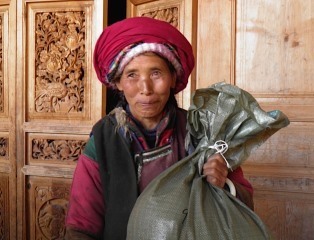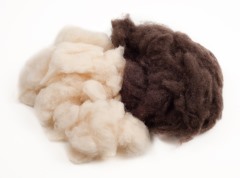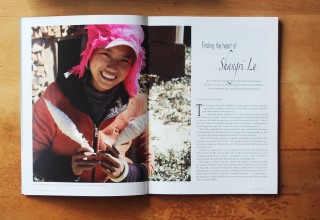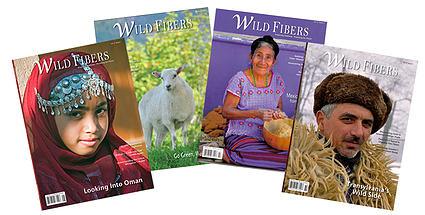by Katherine on September 6, 2018

We are excited to announce the launch of our new Rocking Yak website! With this new look comes a new logo and new products. Take a look around!

Find out more about us in How It’s Made. In Yak to Yarn you can learn how we take soft yak down fibre and craft it into beautiful yarn and hand-knit products. You can take a look at our Philosophy, or why we do what we do, and even meet some of our knitters.
And don’t forget to check out our growing collection of garments in our Product Catalog or in the Products section of our website.
If knitting your own creations is of more interest to you, then take a peek in Creative You where you can find helpful resources explaining our Yarn Weights and even download some Free Patterns.
What have you created with Rocking Yak yarn? Where have you been with Rocking Yak garments? Follow us on social media and mention #rockingyak. We would love to share what you’ve knit or where you’ve worn Rocking Yak!
by David on October 19, 2015

We all know what a charity is and we all know what a business is. A charity’s bottom line is to bring some kind of benefit to a group of people who could use the help through the money or service of others. A business’ bottom line is to earn a profit for the investors by bringing a product or service to market. But what happens when you mix the two? You get a social enterprise, a mix of the best parts of a charity and a business.
A social enterprise is a business that wants to help people more than anything else. Like a business, a social enterprise seeks to bring a product or service to market but does so in order to provide sustainable employment to its workers and suppliers, not to benefit the investors. It’s about providing an opportunity for employment to those who need it but have none.
A social enterprise is a charity that seeks to be self-sustaining. Like a charity, a social enterprise helps people in need but in a way that is both sustainable and brings self-worth. It’s not about giving money away. It’s about developing a product or service that provides sustainable employment and fair wages in a safe workplace. It’s about recognizing the value of a person and the skills they have to offer.
This is a tricky balance but one that is desperately needed if there is to be meaningful and lasting change in a community.
by Donna on October 17, 2015

Yaks have been in the Himalayan mountains for thousands of years. Tibetans have been herding yaks on the Tibetan Plateau for centuries and using their hair or fibre to provide shelter and clothing for their families. Yak fibre is an essential part of the lives of Tibetan nomads and has some very unique qualities.
Yaks have two types of fibre: coarse hair and fine down. The coarse hair is typically black and is what you see when you look at a yak. It’s the outside coat that protects the yak from the elements, whether rain, snow, high winds, or even the intense summer sun. This very coarse hair is used by Tibetans to make tents, ropes, and hardy loose-fitting outer coats. The inner soft down gives the yak its warmth for those high plateau winters. The yak down is very fine, making it perfect for articles of clothing worn against the skin. It is said that yak down is softer than cashmere, with more warmth for its weight.
The hair and down is harvested in spring as the temperature rises. These fibres fall off the yaks as they shed, but can also be plucked or gently pulled off by the herders. On rare occasions a pair of scissors is brought out to gather the hair and the fibre. Most yaks have a black outer coat of hair with a brown or grey inner coat of down. There is also the more rare white yak. Each year a yak typically sheds about 100g of down fibre. The rarity of this down fibre contributes to its cost.
Tibetans have been gathering yak fibre for hundreds of years and only now is the rest of the world learning about this beautiful fibre. Bringing this natural fibre from the high Tibetan plateaus to world’s markets is well worth the effort.
by David on December 17, 2014

A little while ago, the women in the knitting village asked us how much money they had earned over the year. They wanted to tell their husbands how much they made.

On average, they made about $750 USD last year with the part-time knitting they did for us. (A typical laborer in the city makes about $15 USD for a full day of work.) What we didn’t realize was that their children were only able to go to school because of this money.
There are no tuition fees here and the government pays room and board for these children when they are at the boarding school in the bigger towns. (They start boarding school in Grade 1.) But the families can’t afford to pay the travel costs to get the children to and from school. They have no money. They live off the land. They stay warm in their homes and have enough food to eat but they have no money for travel.
Bringing them employment means their children can go to school. Bringing them employment means they can afford glasses so they can continue to work. And visiting them in their village with our vehicle means we can deliver items from town that they can’t afford to go and pick up. We asked one of our knitters how many other families there were in the village that couldn’t afford to send their children to school. She held her hands to her face, shook her head, and said, “Many many more.” The production and sale of these hand-knit garments means these women can earn money to put their children in school. They don’t want handouts. They want to work and they are great at it.
by Bret on March 12, 2014
When we started making the trip from Shangri-la to the spinning village, it would take us over an hour each way. The road we took was winding and full of potholes. It was not uncommon to find a truck turned on its side every now and then. In recent years, the Chinese government has built our friends a new winding road cutting our travel time in half.


Throughout the winter months (Nov – Feb) there isn’t any fieldwork to be done. This is the time that our spinners are able to spin yarn.
Every two weeks we fill my truck with 25 to 30 bags full of cleaned and carded yak down fiber to deliver to the ladies.


Because the Tibetan people are a very communal group, they enjoy gathering out on the street to talk about the latest happenings. Our spinners often walk around as they spin yarn, visiting friends and enjoying the warm winter sun at 10,000 ft above sea level. Spinning fiber is such a natural action for these ladies that watching them work is truly poetry in motion.

by Carrie on March 7, 2014

When I am giving a baby gift, there is certain criteria that I look for. I want the gift to be handmade, practical, loved by both mom and baby, and heirloom quality. This usually means that I knit a gift using The Rocking Yak’s luxurious hand spun yarn.
Yak down yarn is the PERFECT choice for knitting baby items for these 6 reasons:
1. Yak down is naturally hypoallergenic and extremely soft on sensitive baby skin.
2. Yak down is super snugly and warm for tiny little bodies.
3. Yak down is naturally water resistant, keeping cold moisture away from baby.
4. Yak down is machine washable, making it easy for mom to clean, (wash in cold water and lay flat to dry).
5. Once knit, our yak down yarn as a beautiful soft drape that makes it easy to snuggle into.
6. We stand behind the integrity of our yarn, believing it to be the perfect choice for your next heirloom gift.
Now is a great time to get started on those new baby gifts. It’s still cold, we’re still stuck indoors, cabin fever is an all out epidemic, & knitting will keep you busy.
by Bret on January 12, 2014

“Old Town” in Shangri-la on 2013/02/03

“Old Town” during the fire on 2014/01/11
The Tibetan town of “Shangri-la” is the place that The Rocking Yak calls home. This town had a devastating fire in its “Old Town”. Most of this ancient district burned to the ground. The buildings here were made out of wood. The narrow cobblestone streets made it impossible for the fire engines to reach the fire. Because of this, local residents lined up to pass buckets of water in an effort to combat the flames.
More than 2,600 people have been displaced. The fire destroyed about 242 houses while another 43 homes were demolished to prevent the fire from spreading. Among these houses, were homes that were built over 100 years ago, later having the first floors converted into shops and restaurants. Many residents and merchants lost everything they owned.
The history of “Old Town” goes back 1,300 years being an important stop on the South Silk Road. The city of Shangri-la relies heavily on the income made from tourists who come to visit “Old Town”. The effects of this fire will impact all of us for some time.
During this time, our hearts go out to all who were effected by this devastating fire.
Blaze in ancient town in China’s Shangri-la
by Carrie on January 6, 2014

Indigo is an ancient natural dye that ranks among the oldest dyes to be used for textile dyeing and printing. Egyptian mummies from as far back as 2500 BC have been found covered in indigo dyed hemp cloth. A cuneiform tablet dating back to the 7th century BC was discovered in Mesopotamia giving a recipe for the dyeing of wool, saying “… lapis-colored wool (uqnatu) is produced by repeated immersion and airing of the cloth”. This indigo was most likely imported from India, for it is believed that India is the oldest supplier of the blue dye. It was a luxury item used by the Romans in painting, and in medicinal & cosmetic purposes.
Indigo remained a rare commodity throughout the Middle Ages, until a direct trade route was discovered by the Portuguese explorer, Vasco da Gama in the late 1400s. This caused the European use of indigo to increase significantly. Eventually, indigo plantations could be found in many tropical regions around the world. By the late 1800s, 19,000 tons of indigo was being produced from plant sources every year. A few years later a synthetic indigo was invented and by 2007 17,000 tons of synthetic indigo was being produced worldwide. Most of this dye was used in the production of denim for blue jeans.

While most of the indigo used today is synthetic, we at The Rocking Yak, use an all natural dye made from the indigo plants farmed in the region. The plants are harvested and left in large wooden barrels to ferment.

Once the dye stuff is ready, it is placed into another large barrel & made into a dye bath.
We use the traditional method of our region to hand dip our yarn. The dye bath actually looks green in color. As the yarn is brought out of the bath and begins to oxidize, it turns into the blue that we all love.

Dyeing our yarn in this way is a LOT of work, but if you ask us, it is worth all the effort that goes into each small batch of dyed yarn. It is our desire to do what we can to honor & preserve the culture & traditions of the villagers we work with.

by Carrie on March 17, 2013

We are very excited to share with you that The Rocking Yak has been featured in Wild Fiber Magazines, Spring 2013 issue.
We first came into contact with Linda (Editor) about a year ago. It didn’t take long for us to realize that this magazine & our company are are a perfect match. Bret, stopped by the office of Wild Fibers Magazine last summer while on his tour around the U.S.

Linda has done a fantastic job of telling our story. She has this way of being in a moment. She has the ability to take in everything. The sights, the sounds, the smells. Then, when she sits down to write about it, she is able to put flesh & bones into her writing & the story comes to life.
I (Carrie), have been working with Bret on this project for 6 years now, having never set foot in China. Linda was able to pull stories out of the field & give me glimpses into the very heart & soul of this company that I had yet to see. It’s a gift that she gave to me.

“The mission of Wild Fibers Magazine is to understand the role natural fibers have played in developing cultures and supporting communities throughout the world. We are as devoted to the people who spin, weave, and create “magic” with fiber, as we are to the farmers, nomads, and shepherds who have tended these endearing creatures from the start. Wild Fibers travels to places that have yet to be rubber-stamped by the trappings of the modern world. We sleep in yurts. We comb camels. We spin cashmere. And most of all, we learn about a way of life that is held together by one very long, long thread. But it’s not all yak butter tea and pup tents. With the voracious march of synthetic fibers, we stay connected to new initiatives including Prince Charles’ Campaign for Wool and Discover Natural Fibers – an international coalition of fiber producers and processors dedicated to preserving the importance of natural fibers on the planet. Readers love Wild Fibers not only because they discover the world in ways they had never imagined, but because they have such wild fun in doing it!” ~ Wild Fiber Magazine






















